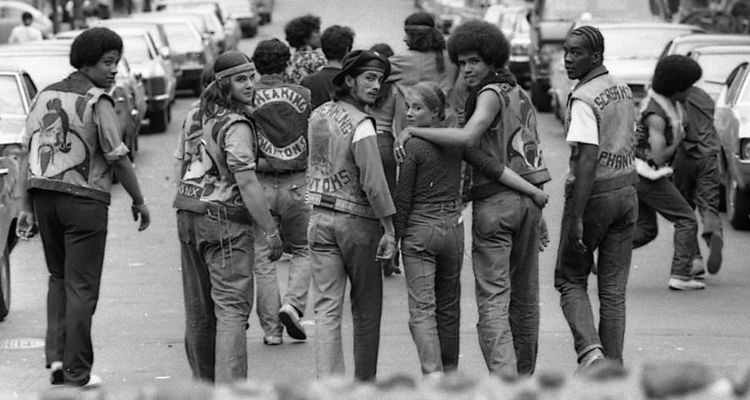 (3 / 5)
(3 / 5)
“Warriors, come out to play-yay.”
You’ve know David Patrick Kelly’s sing-song mockery, even if you’ve never seen the film it’s in. With its gritty, lurid depiction of costumed gang warfare in ‘70s New York, The Warriors seems like a film born for cult stardom.
According to Rubble Kings, the new documentary from DJ/music producer Shan Nicholson, it also has a basis in reality, from the funky get-ups to the brutal and unprovoked attack that finally led to peace between the warring factions. The nicknames might be quite as eccentric – no Swans, Ajaxs, or Cochises here – but the events are no less remarkable.
Rubble Kings takes us back to the Bronx in the early ’70s, a neighborhood on the verge of collapse. Misguided city planners bulldoze strips through the landscape and the community is mired in poverty and drug use. With nothing to live for and nothing to do, young men and women take possession of the streets, laying claim to their patch.
Among the gangs – The Assassinators, Tomahawks, Black Assassins, Roman Kings, Reapers, Turbans, Savage Skulls – are the 2,500-strong Ghetto Brothers, whose leaders look beyond the violence to a world in which they have a role in shaping the future of their communities for the better.
Through washed-out archive footage and talking heads with the survivors, Rubble Kings details the vibrant and often brutal culture of gang initiations and musical aspirations (interviewees include Afrika Bambaataa).
Aside from the patches on their denim jackets, though, there’s not much to distinguish between the competing gangs and the film tacitly avoids commenting on the victims of their other pursuits, crime being casually described as “the major industry of the Bronx”. “There were no civilians”, declares one former gang member, and, absorbing as the personalities on display are, it’s easy to forget this isn’t entirely true.
Nevertheless, it’s undeniable that, whatever else they may have done, aspiring musician Benjy Melendez and beret-wearing Carlos “Karate Charlie” Charez were instrumental in bringing peace in a place where torched buildings “were the norm” and at a time when all outside role models, from Malcolm X to Bobby Kennedy, ended up dead.
Out of images of what could have been “the biggest bloodbath in the history of New York” come ones of block parties, jam sessions, and the birth of hip-hop – inter-titles that reveal many involved went on to become counselors and activists, positive forces up to the present day.
What Rubble Kings leaves out may detract from its value as a work of sociology – though experts like academic Marshall Bermann and advocate Felipe Luciano are given a few moments apiece – but it makes for a brief, fascinating glimpse into a world not often seen outside of fiction (and not too often within).
77 minutes of screen-time isn’t enough to capture any real complexity, even aided by some punky images and a John Leguizamo voice-over, but it’s certainly enough to make an impression.
